Rings & Things’ raw-brass filigree can be polished to a bright and shiny finish, but why stop there? The filigree are the perfect canvas for creativity, so why not use color to create a one-of-a-kind component for use in your jewelry making? Here are the steps for my (super-easy) method of colorizing raw brass filigree.
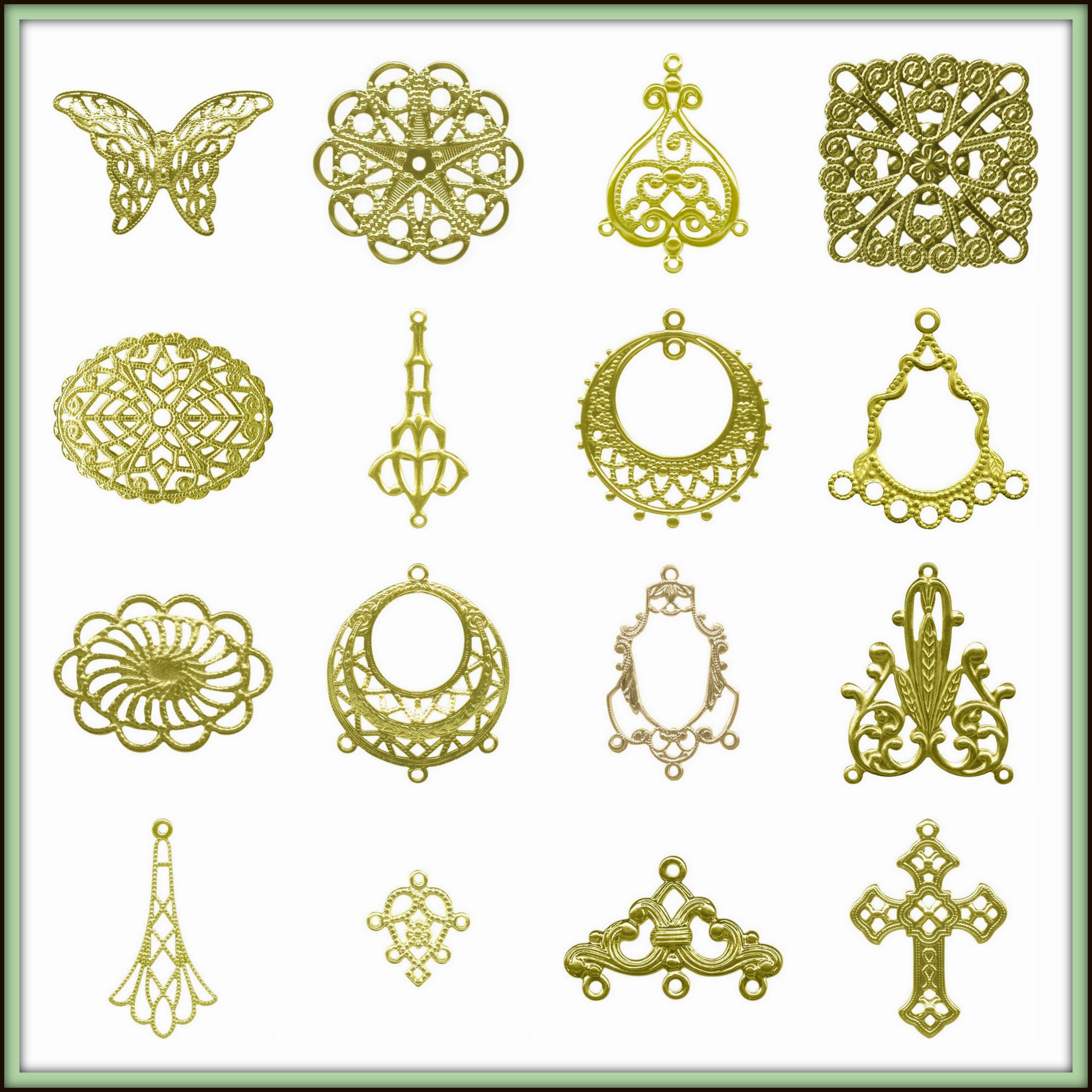
Rings & Things raw (unplated) brass filigree, so many to choose from and ready for colorization.
Here are the tools and supplies you will need:
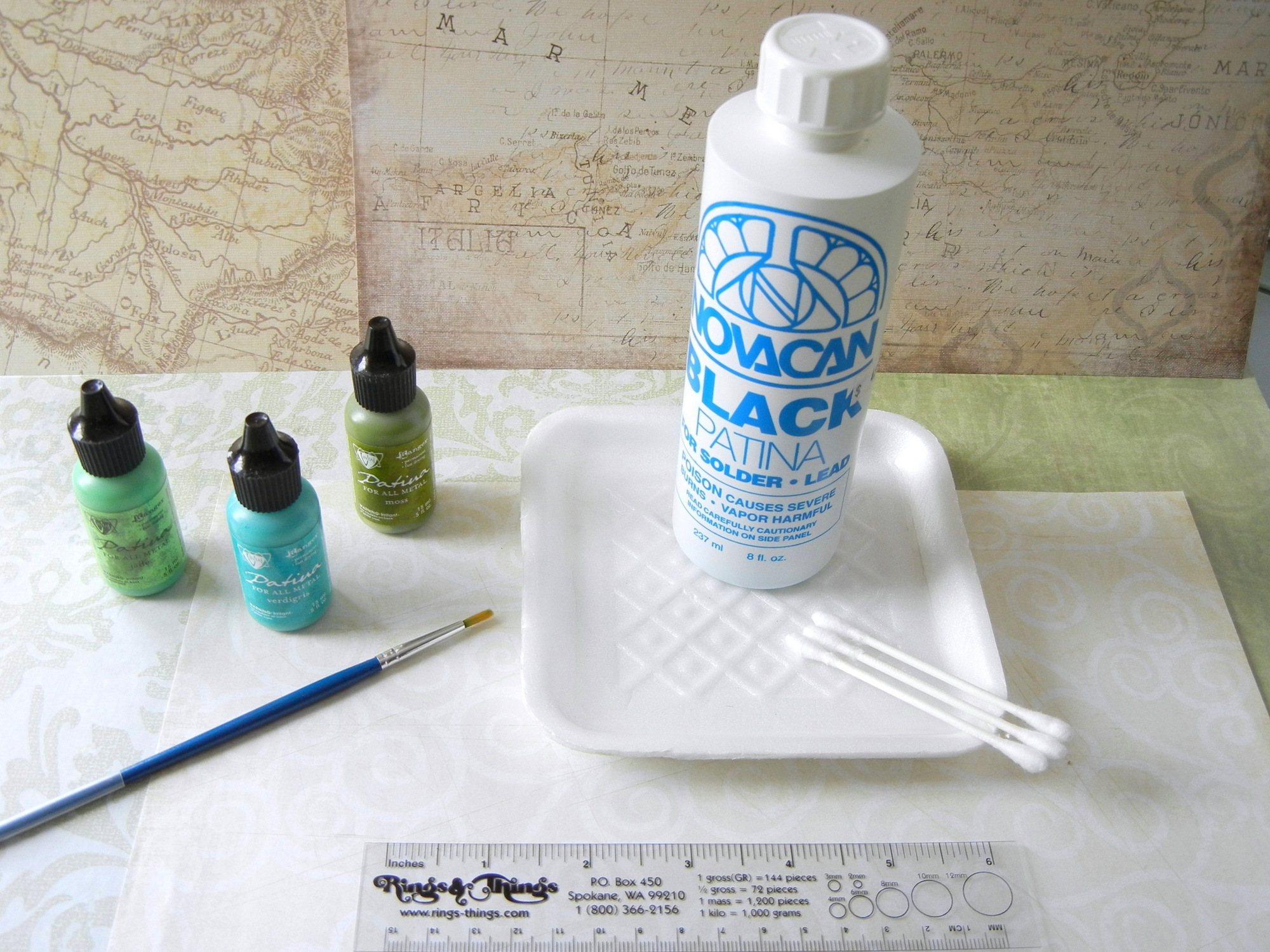
- Vintaj Patina – kit or individual colors (I used item # 86-420-995)
- Novacan Black Patina item #86-310
- paint brush (for applying the Vintaj Patina)
- cotton swabs (for applying the Novacan Black Patina)
- paper towels (for clean up)
~.~*~*~*~.~
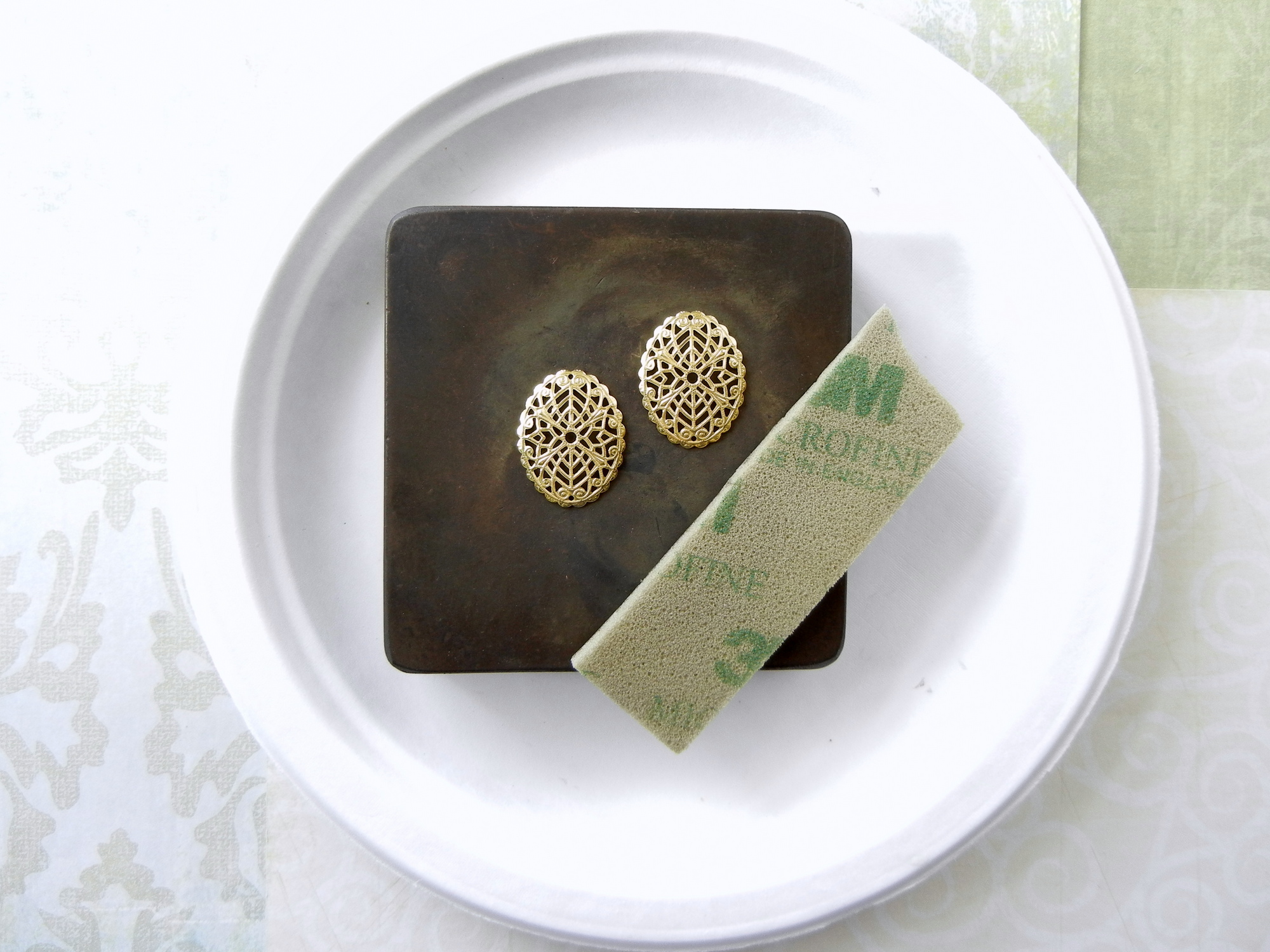

Use a 3M™ 1200-1500 microfine-grit sanding sponge to clean any dirt from the raw-brass filigree. Then wipe the filigree to remove the sanding dust.
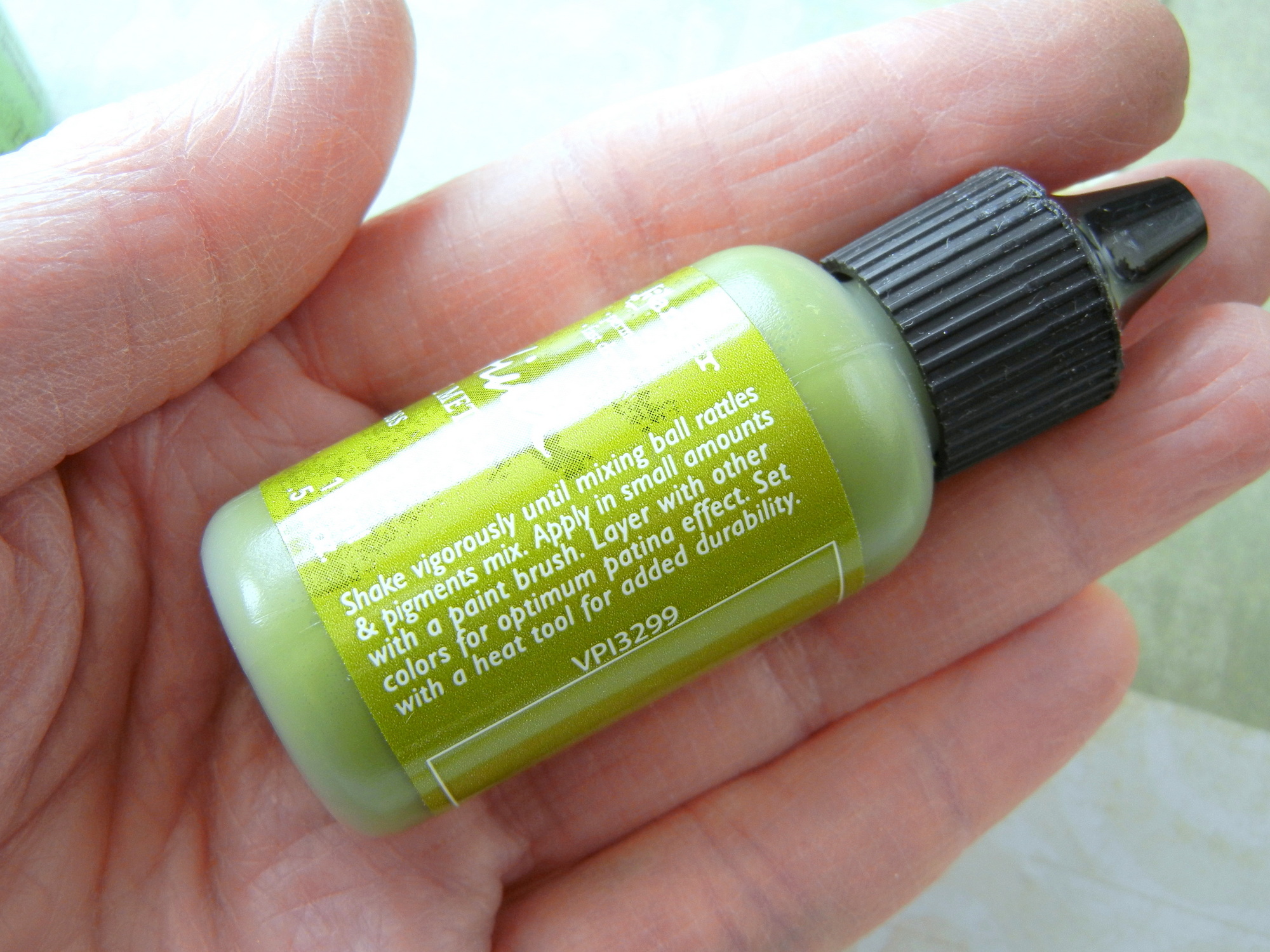
Read and follow the instructions on the Vintaj Patina Container. To work properly, the patina must be fully mixed. If the mixing ball isn’t rattling in the bottle, try tapping the bottom of the bottle firmly on a counter top to knock it free.
I used three colors of Vintaj patina to create the faux “verre de gris” finish on my filigrees (the Vintaj “Weathered Copper” Kit is perfect for this). You can either work with the packaged Vintaj kits or your choice of colors sold individually.
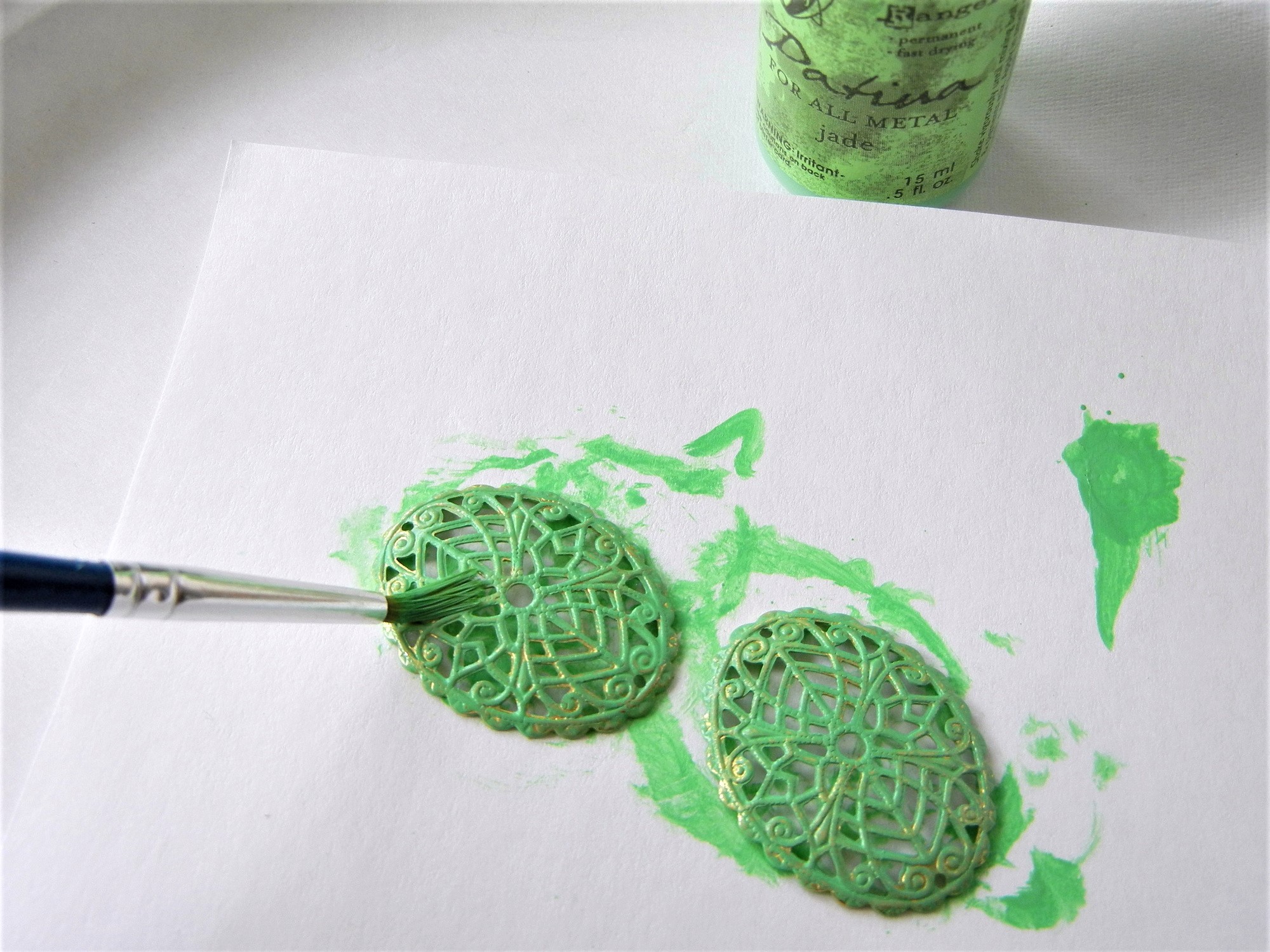
Apply the first color. I added a mottled coat of “jade” on the front and the back of the filigree. A little goes a long ways; just apply a thin coat.
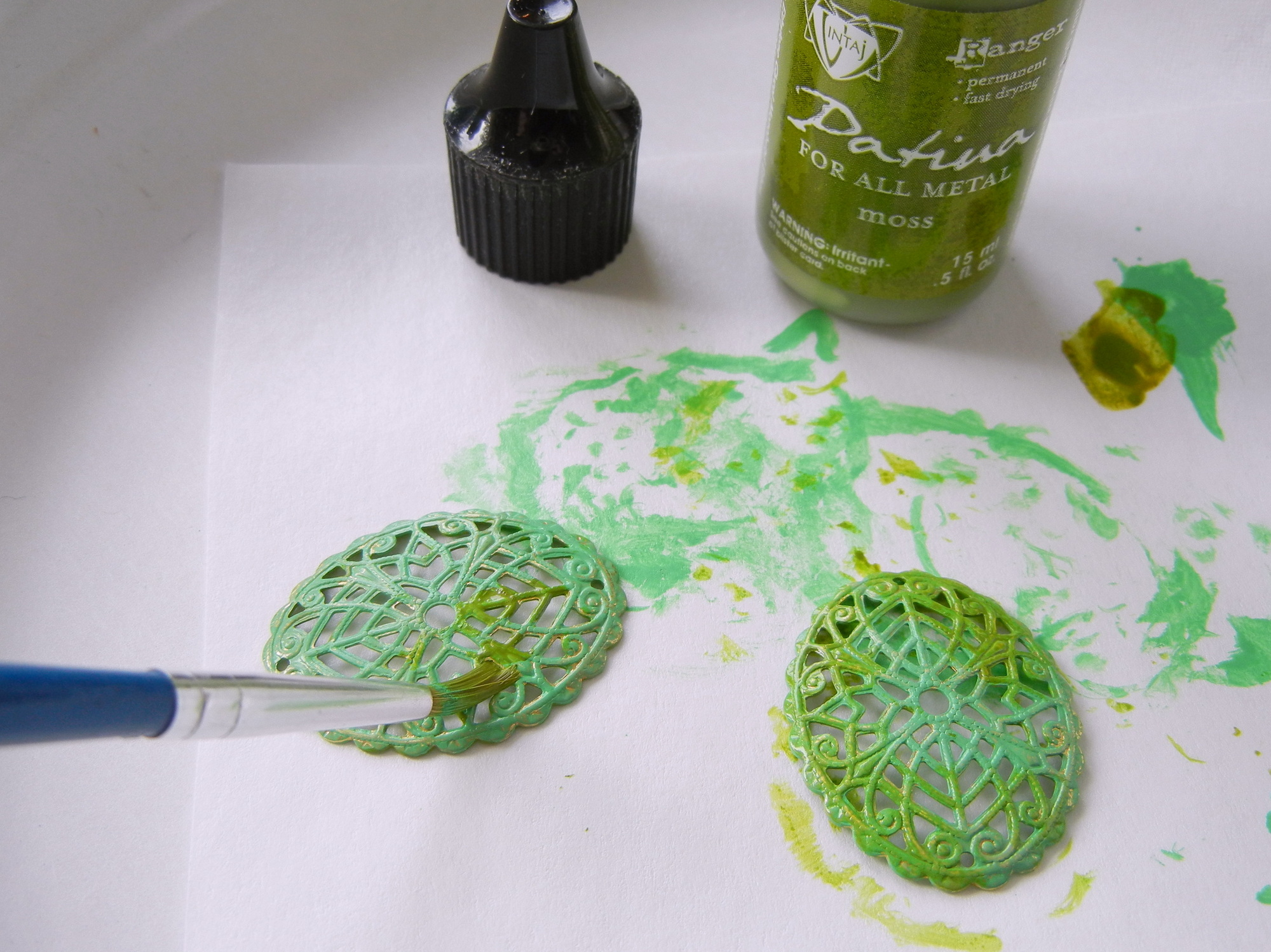
Apply the second color. I dabbed the second color “moss” sparingly on the filigree (front and back).
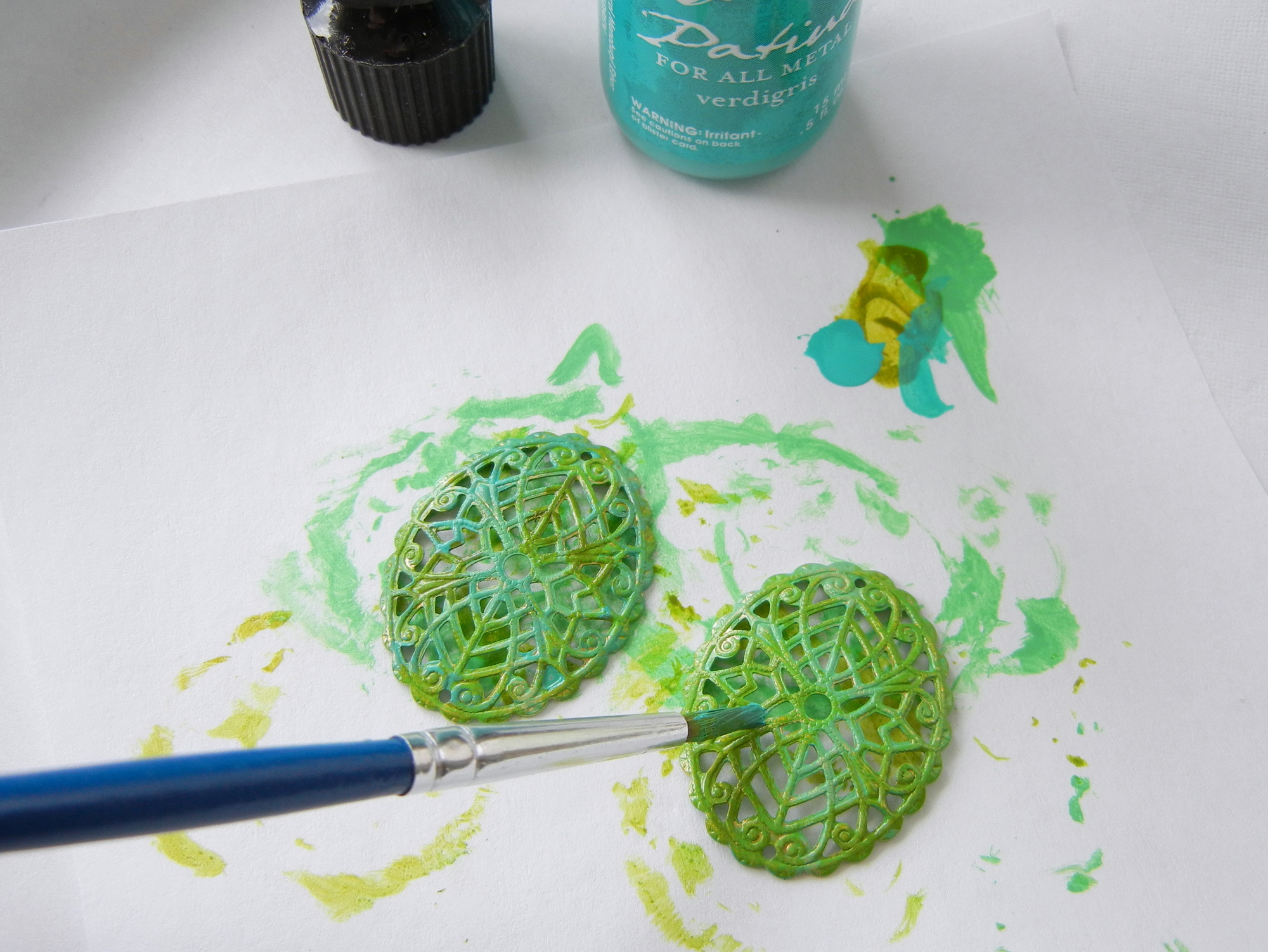
Apply the third color. I applied the third color “verdigris” in small portions to the filigree to create a dappled look.
Be sure to clean the patina paint from your paint brush before it dries. Vintaj Patina cures to a waterproof finish.
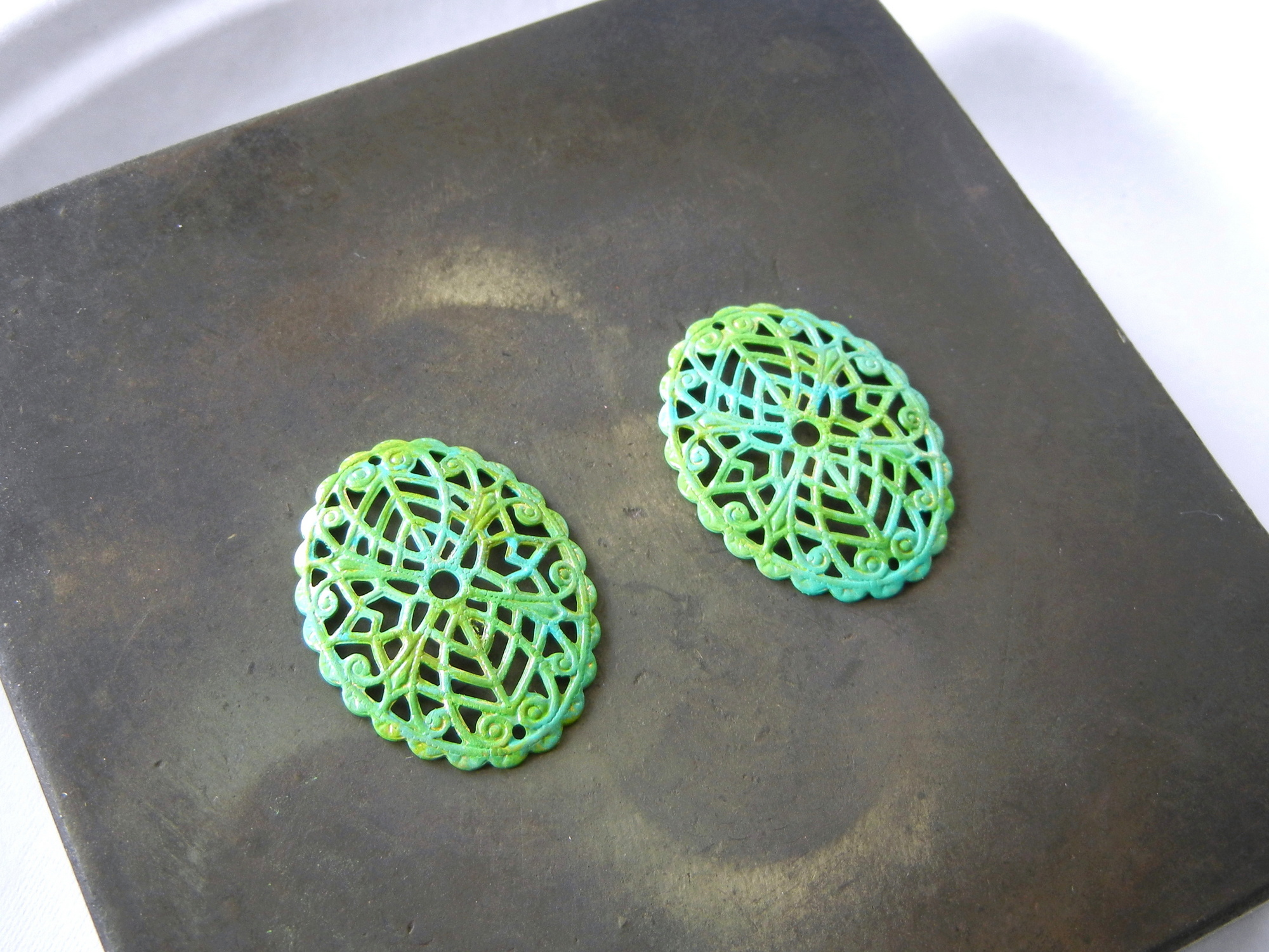
Set the filigrees aside and allow the patina to dry. Vintaj Patina is a quick drying paint, so it only takes a few minutes. (Or you can use a heating tool, like the Inkssentials™ Heatit craft tool, to quickly cure the patina.)

Use a 3M™ 1200-1500 microfine-grit sanding sponge to remove Vintaj Patina from the high points and reveal highlights of raw brass. I did this on both the front and back side of the filigrees.
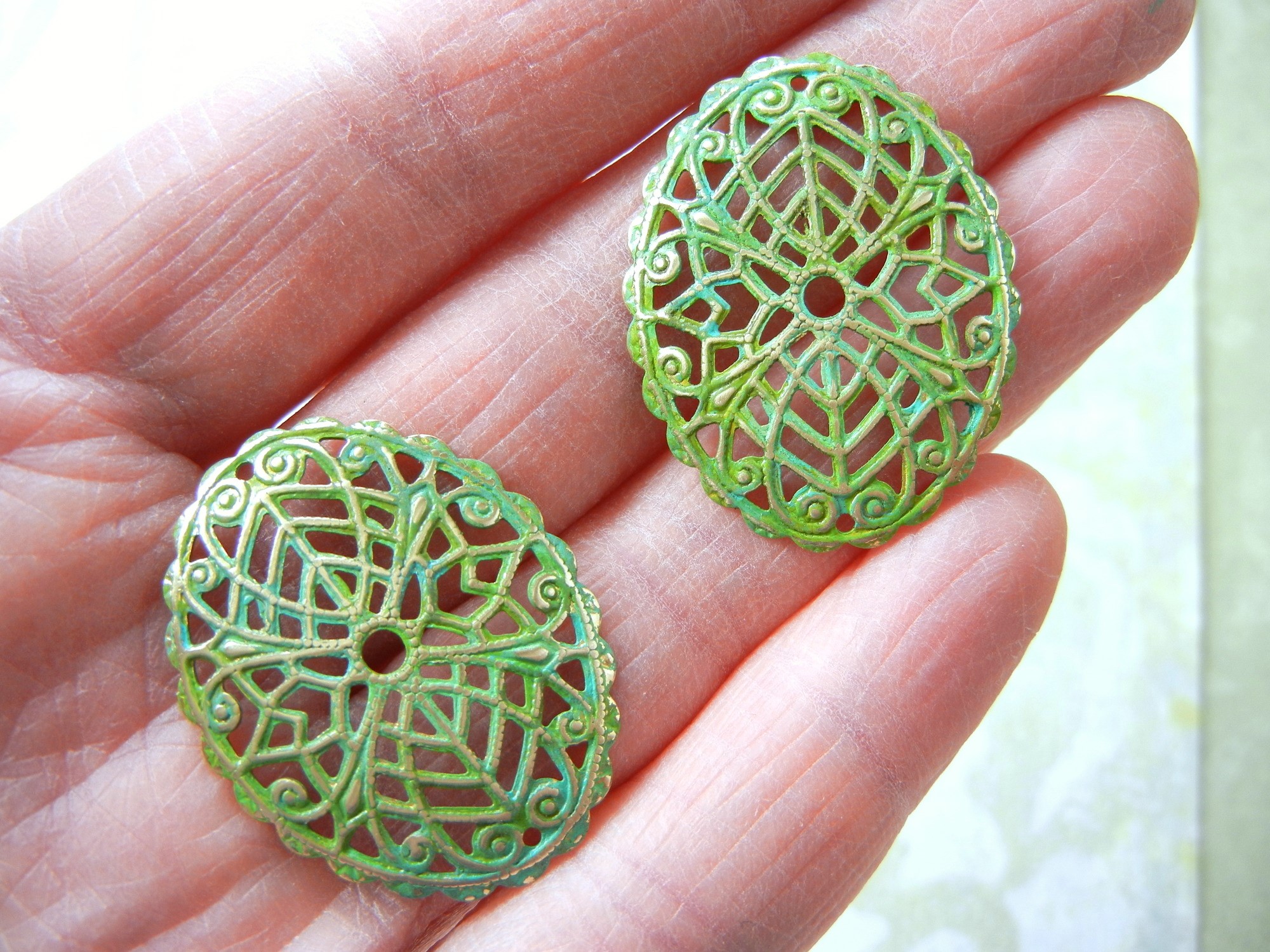
Here is the gently sanded, green-mottled filigrees. If you like this look, they are perfectly ready for jewelry making. Or you can follow the next steps to add a darker accent color with Novacan antiquing solution.
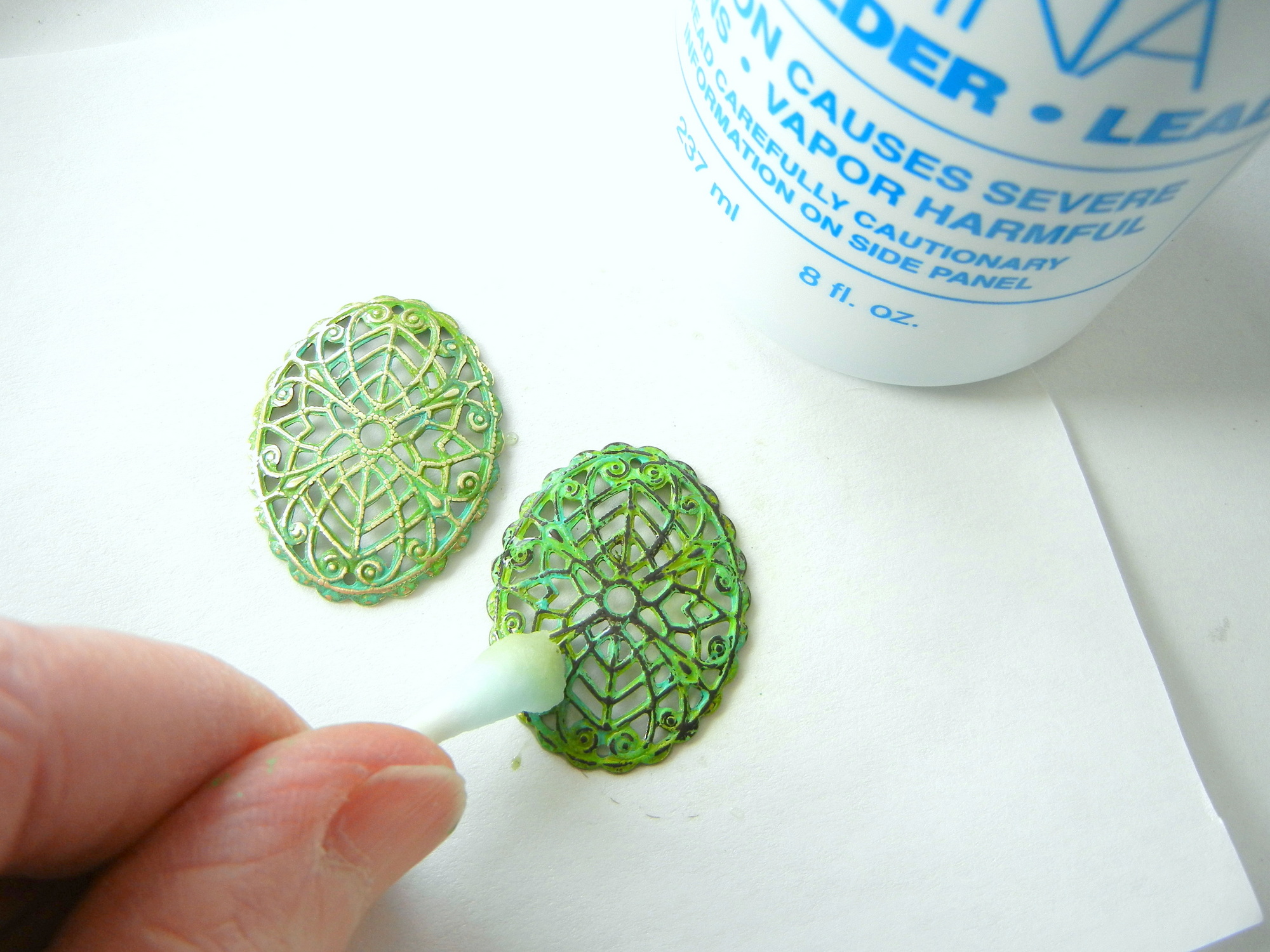
Novacan Black Patina is a chemical patina used to “antique” raw metal. Dip a cotton swab in the Novacan Black Patina until saturated. Use a scrubbing motion to apply the Novacan to the filigree until the bare brass portions darken.
I prefer a cotton swab to a paint brush for applying Novacan Black Patina because there is no metal ferrule to contaminate the patina.
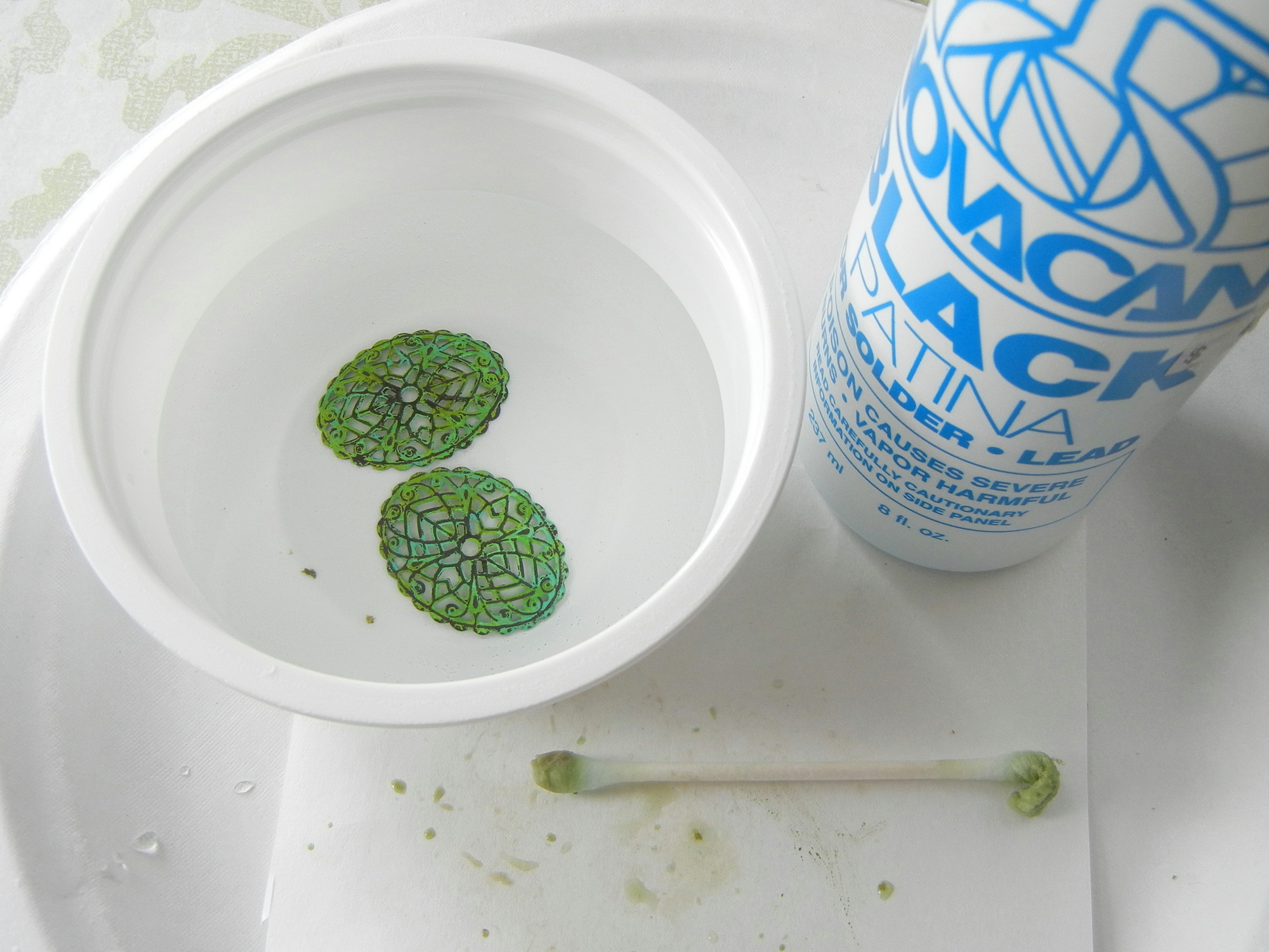
Rinse the filigrees in tap water to remove any Novacan Black Patina residue. Then dry the filigrees with a paper towel.
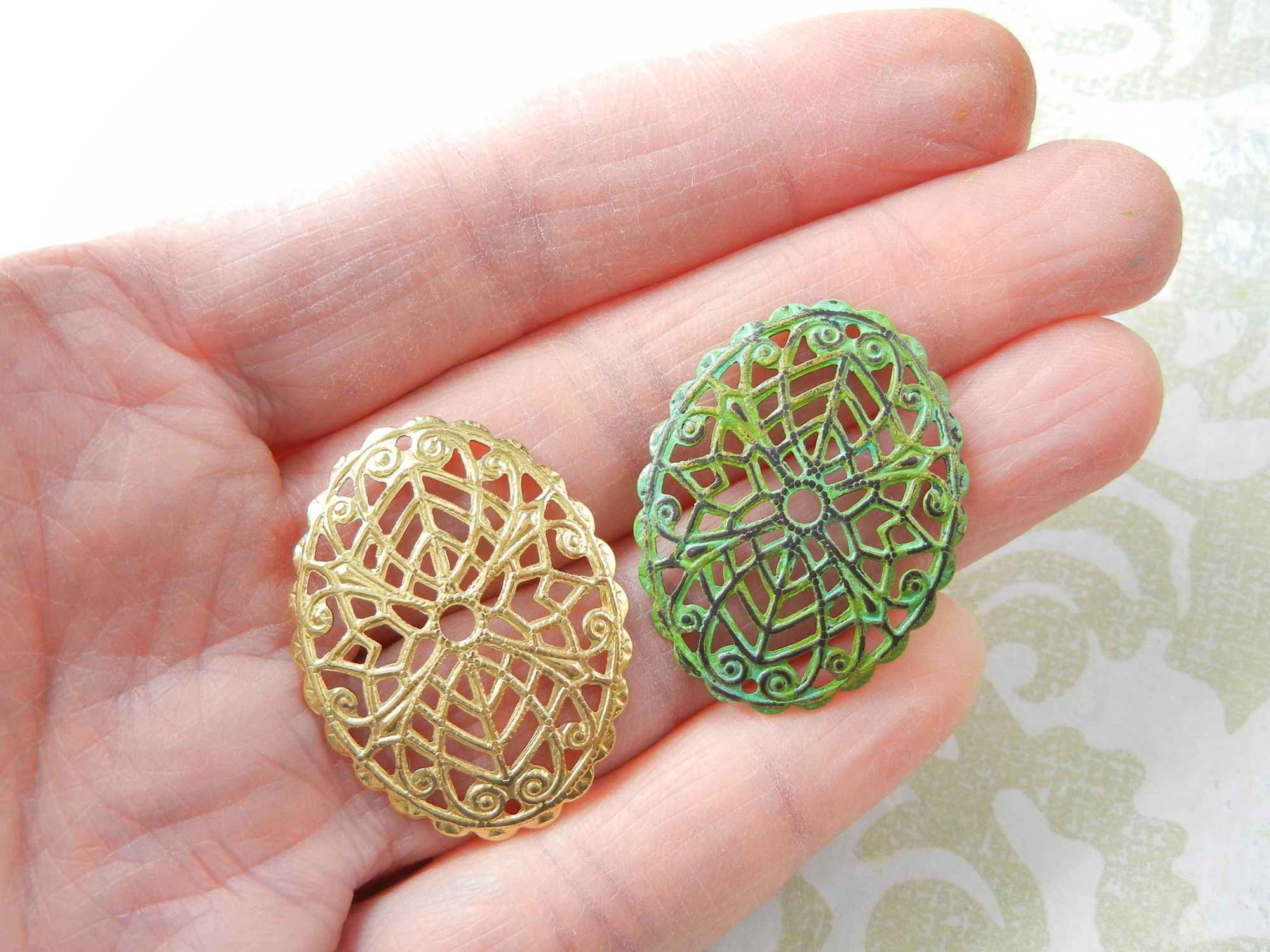
A close comparison of the raw brass filigree and the finished colorized filigree.
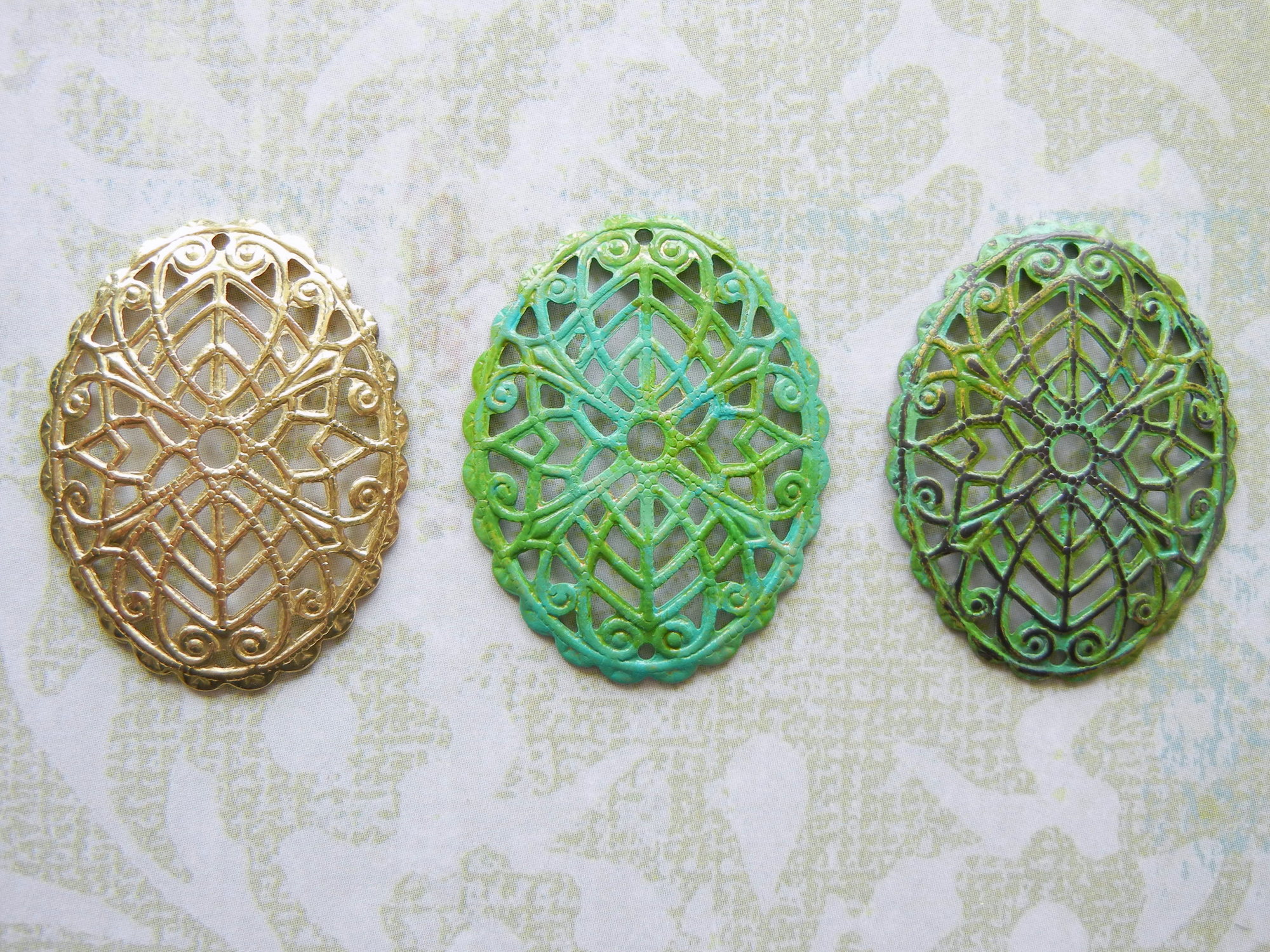
Pictured are three stages of colorizing the raw (unplated) brass filigrees— before, during, and after.
~.~*~*~*~.~
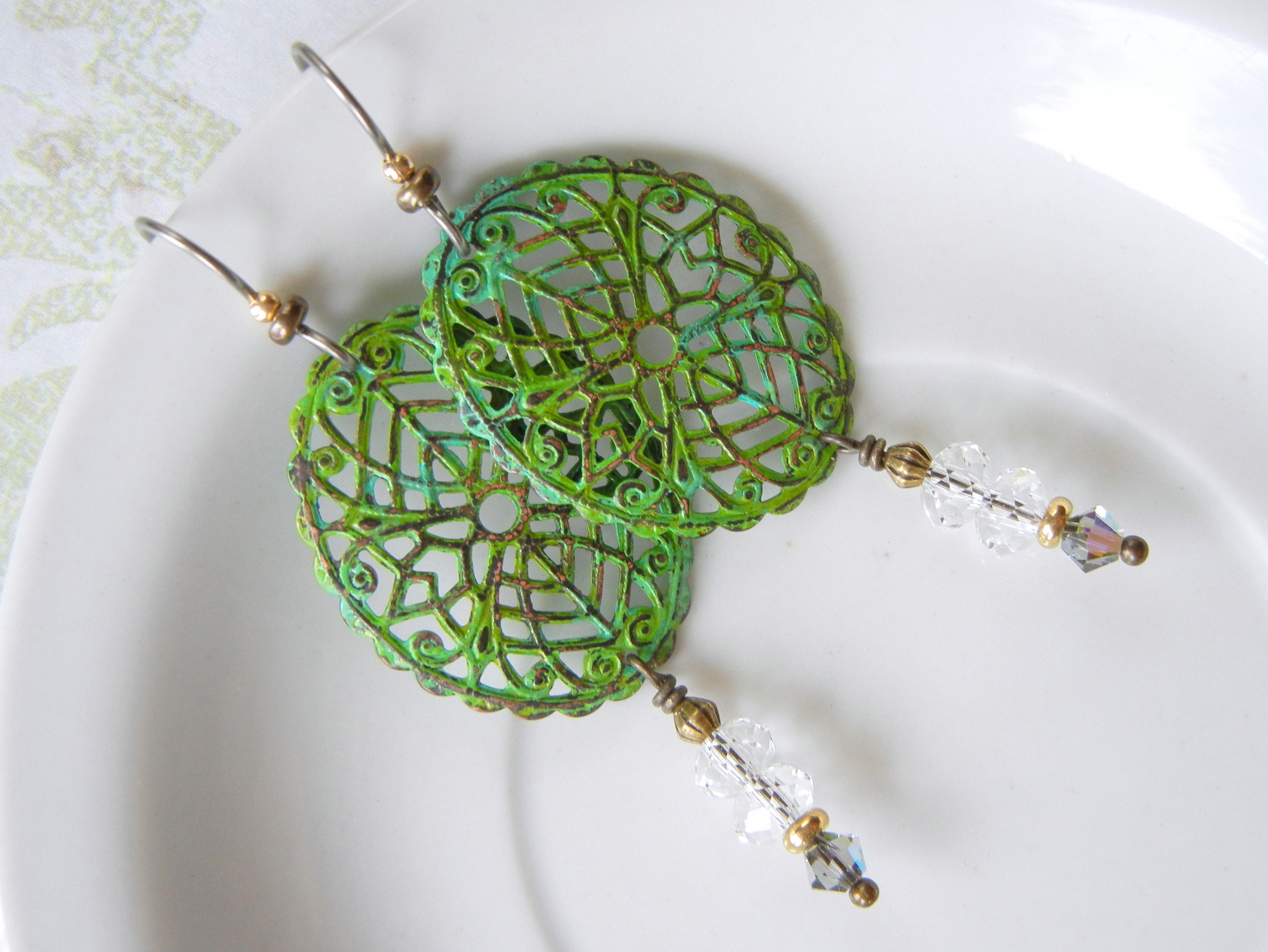
“Gypsy Dancer” Filigree Earrings by Rings & Things designer Mollie Valente. Visit the Rings & Things Design Gallery for step-by step instructions and a list of supplies for this free jewelry-making project.
Make things,
Mollie



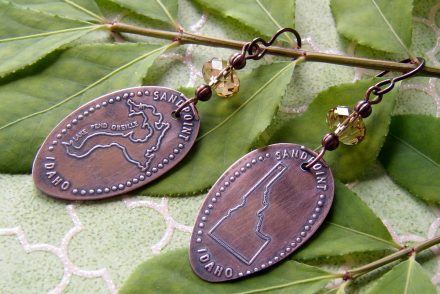
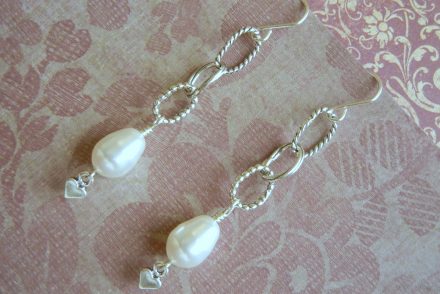
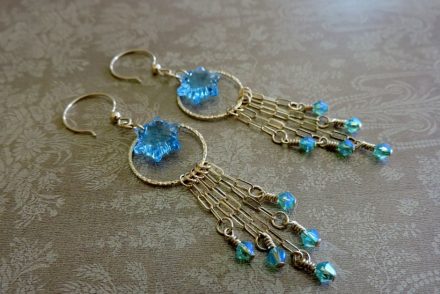
No Comments